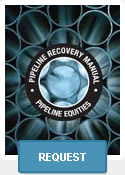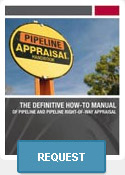Methods for Determining the Value of Pipelines,
Part 1
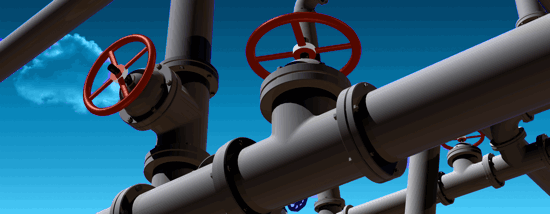
With the advent of new pipeline construction and the transfer of pipeline assets via mergers, divestitures and investment exits, pipeline appraisals are playing an increasingly important role for upstream and midstream companies alike.
With the advent of shale-gas plays, several joint ventures have been formed between oil and gas producers and private-equity providers to launch new midstream companies. As the new entities gather and transport gas to market, the field matures, and the producers look to monetize the midstream assets through a sale, seeking the higher returns of chilling and production activities.
Before the sale, an appraisal is needed to evaluate the midstream assets. That's where pipeline appraisal efforts come into play. As with most activities, there are several methods of appraisal.
Many right-or-way appraisers rely on the "across-the-fence" (ATF) method to assign value to a particular right-of-way. The ATF method suggests that the right-of-way is worth whatever the surrounding land is worth. This method is popular, but only accounts for the value of the land itself. It does not take into account the value of the entity that uses the right-of-way, especially when it comes to right-of-way segments that contain pipelines. Typically, an easement or right-of-way contributes 5% to 7% of the cost of building a pipeline and is not a large factor in the value.
Pipeline Equities saw the need to find methods of appraisal suited specifically to the pipeline industry.
The need for pipeline appraisals came about initially when a discovery was made of the overvaluation of pipelines by local taxing authorities as well as overvaluation (and undervaluation) of pipelines involved in mergers, acquisitions, or estate settlements.
A valuation report concerning active or inactive oil, gas or product pipelines may be required for the following reasons: preparing for a sale or divestiture; readjusting state, local, ad-valorem taxes/tax assessments; estate settlement; partnership termination; preparing for a purchase or acquisition; determining salvage value; preparing for pipeline use conversion; and establishing value for accurate accounting.
Appraisal methods
Beyond the ATF method, Pipeline Equities uses a combination of methods to determine the value of a pipeline. The first, a market analysis, uses comparable sales histories. This works well for valuing land and housing, but each pipeline is so different that a method of comparable sales is not very useful. Because land and houses are plentiful, making commodities of land or houses is much easier than making commodities of pipelines.
However, this method is still useful to get an overview by looking at sales histories of comparable pipelines in varying circumstances and locales in order to get some ideas in broader areas of comparison such as urban versus rural, California versus Mississippi,gas versus crude and regulated versus non-regulated pipelines. This factor is also called comparable analysis and is the primary tool for determining pipeline right-of-way values as opposed to the ATF method used by real estate appraisers for valuing road and power line easements.
The highest-and-best-use method is not the best method for pipeline evaluation. However, on occasion, when pipelines are being valued for usage change, this method can be useful to establish the value of the existing pipeline and the cost of convert ing it for another use. Pipelines can be converted from crude-product pipeline to fiber-optic conduits or conduits for electric power line cables from wind-farm electric-grid centers.
For the most part, pipelines are best used for the intent constructed. In the approach using highest-and-best-use, it is better to combine the valuation with some of 40 factors, such as size of line, geography, terra in or right-of-way values. An example might be that the highest- and-best-use for a six-inch gas line might be to change it out for a 10-inch crude line using the same right-of-way, if the contract permits the replacement.
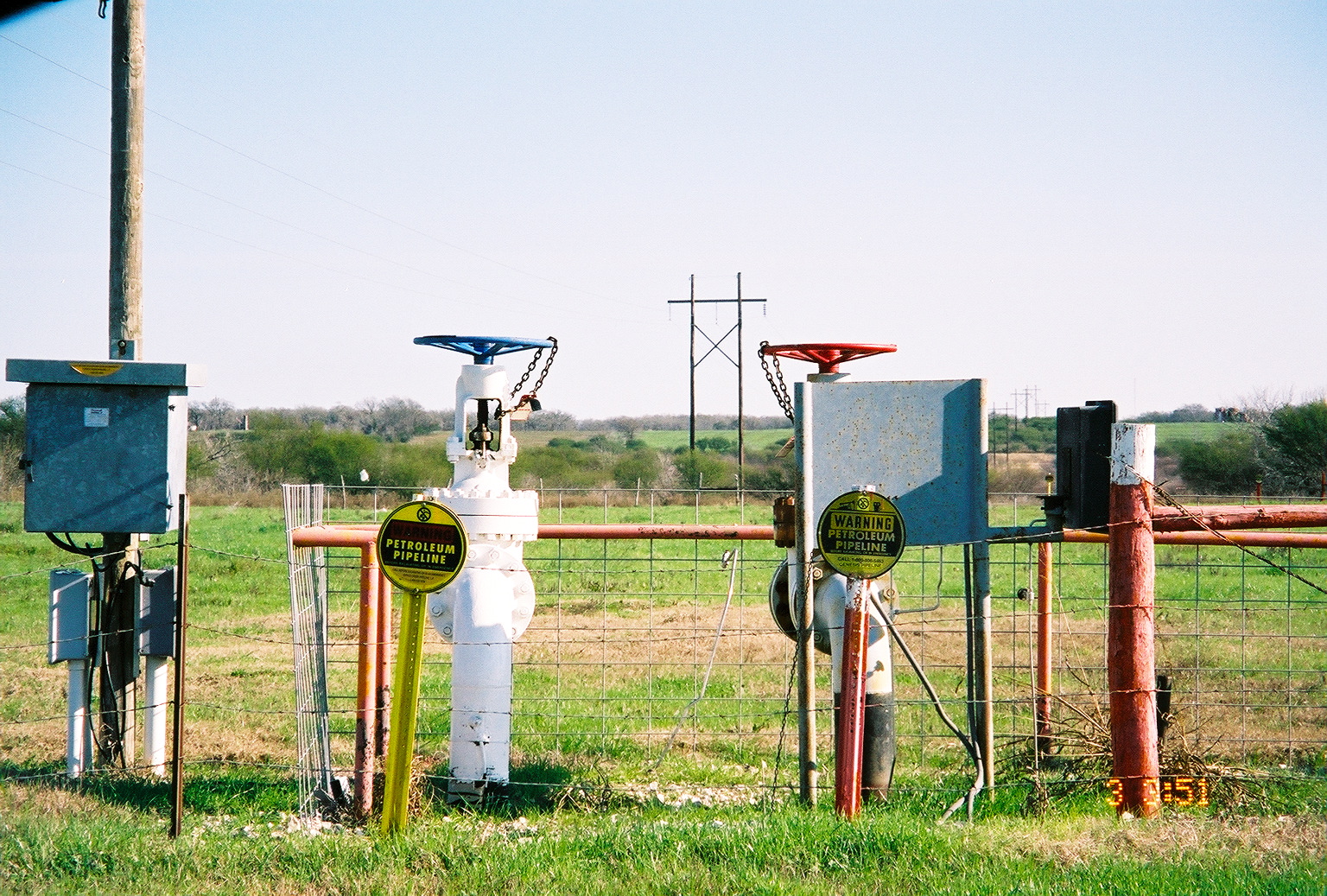
Another method is seller-determined need. This method is used if the seller wants to record financial gain or loss from a sale-use book value. It is not much use to a purchaser because it has no relevance to current worth . Basically the book value might be generated by the accounting of the seller or owner of the property, in whatever means the company accounting might use to determine the book value. For example, it might be based on any methods of determining value such as construction cost, new or discounted, but such book-value designation by the seller has no relevance to the value as far as the purchaser is concerned.
The income base or cash-now method is a popular means of establishing value for pipelines if they are generating or will generate a predicted cash now. This method takes into account forecasted income based on throughput volumes and rates of the commodity transported. Expenses based on a historical or projected income stream are discounted. A variation of this method uses multiples of current cash flow where the average annual cash now is multiplied by a factor of five to 12. This can be done on an annual or monthly basis, much like values of oil and gas royalties are determined. Stakeholders like to compare pipeline values to oil and gas mineral interests. Both can have an indefinite life and both can be reborn as new drilling or new discoveries are made in an area. These additional income streams can be discounted to find a present-day value, or net present value when using future multiples or income.
For example, the future income after operating expenses of a gas pipeline might be $200,000 per year. A reasonable value might be five times that amount or $1,000,000. A buyer might determine that the net present value in dollars paid today might be 20% less than the $1,000,000 or $800,000 net present value, in today's dollars.
The new-construction or replacement cost method is the cost of rebuilding the same pipeline with the same size, same manner, and same (or comparable) easement.This is an important factor in placing value on a pipeline to be considered by a purchaser. This approach also can be discounted. For example, when determining the value of a pipeline that has been operating for 10 years after it was initially installed, the line might have an expected life of 40 years. It could be discounted 2.5% per year of life or a total of 25% off the cost of new construction in today's market.
Each of the above methods can be employed to determine value for a property, or a combination of all can be used. Value occurs with the interaction of demand, utility, scarcity or supply of property and ready transferability of ownership rights.
Factors for values
In addition to these methods, other factors must be considered when assigning value to a pipeline. Pipeline Equities uses as many as 40 different factors to make value determinations.
Pipeline Equities value factors cover the technical aspects of business, physicality, property and commodity value.
Other factors depend on whether the product is purchased at the wellhead and resold, whether and to what extent the product is compressed, enhanced, treated, cleaned, or processed and by what procedures.
Pipeline Equities has had several recent opportunities to appraise pipelines for a variety of purposes. Recently, they appraised a vintage crude pipeline in a mature field on the West Coast. The line had been active in the past and later idled. The operator had intentions of rehabilitation reactivation of the line and needed a fresh appraisal to help determine transport fees or tariffs as a common carrier. It was necessary to estimate the new construction price as well as depreciation and account for rehabilitation costs. Pipeline Equities found the appreciation of the right-of-way costs in the heavily congested area more than made up for any deficiency in depreciated new construction costs.
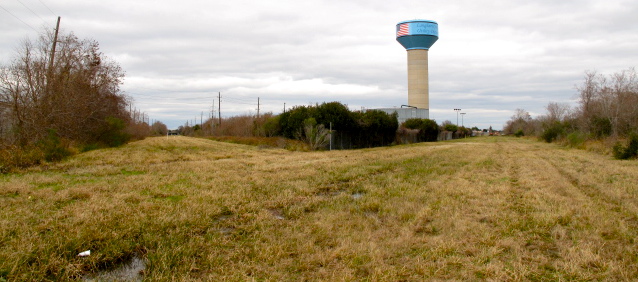
During another appraisal, a bank contacted the firm to obtain an appraised value for a pipeline to be built that would transport jet fuel an airport. The bank wanted to know the value of the proposed pipeline before financing the construction cost. In place were a long-term contract, a firm bid for new construction, and competent, experienced management.
Elsewhere, a hedge fund decided to exit investment in a pipeline business and needed an appraisal of hundreds of miles of active and inactive gathering and transmission pipelines. It wanted to determine the value of the pipeline network to divide interests among investors. Pipeline Equities used multiple methods, including salvage, to come to an equitable value to which all parties agreed. Many of the gathering lines had no discernible easement by which a single right-of-way method like ATF could be used.
The firm has seen many instances where a pipeline or gathering system was originally built for a new field with flush production, but the field was nearing depletion. The operators still must pay regular taxes according to earlier throughput or initial values, which were generally not depreciated. Local and state taxing authorities want up-to-date appraisals before lowering rates. Many local tax appraisers use only new construction cost methods with no regard for throughput, generally via abbreviated Marshal and Swift formulas. Marshall and Swift is a commercial database of in formation, which is like a supermarket for almost any kind of asset valuation, sold by subscription.
Conclusion
The appraisal of pipelines is a specialized and niche industry. The methods for determining value are different from any other type of appraisal practice due to the uniqueness of the product being appraised. No two pipelines are the same. Methods should be based on the way a pipeline owner looks at a pipeline and the right-of-way in which it rests.
Ultimately, the appraiser can only offer an opinion based on available data and market conditions.
When it is all completed, the value is based on what the seller will take and what the buyer will give for a property.
Each of the factors, examples, methods and definitions could be greatly expanded on. For additional information on this subject, email a request for a complimentary copy of the Pipeline Recovery Manual to davidhowell@pipelineequities.com.
For more information and the summary of 40 methods, check back next month for the article Methods for Determining the Value of Pipelines, Part 2.

Article featured in issue
September 2010
By David Howell, Senior Right of Way Agent
Quick Links
- Services
- Tags
- Abandoned Pipelines
- Asbestos Testing Procedures
- Energy Prices Push Appraisal Demand
- Landowner Relations
- Line Pipe: New vs. Used
- Perceived Asbestos Threat
- Pipeline Acquisitions
- Pipeline Appraisal Methods
- Pipeline Broker
- Pipeline Deconstruction
- Pipeline Recycling
- Pipeline Right of Way
- Pipeline Sales
- Secondary Steel Pipe Applications
- Skills of Right of Way Acquisition
- Structural Pipe: Uses & Applications
- Tank Demolition & Clean Up
- Used Pipe: Uses & Applications
- Recent Articles
- Popular Articles
